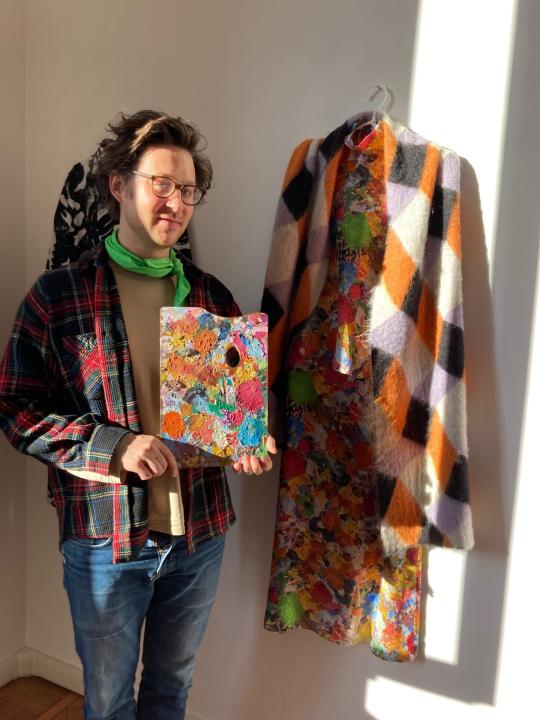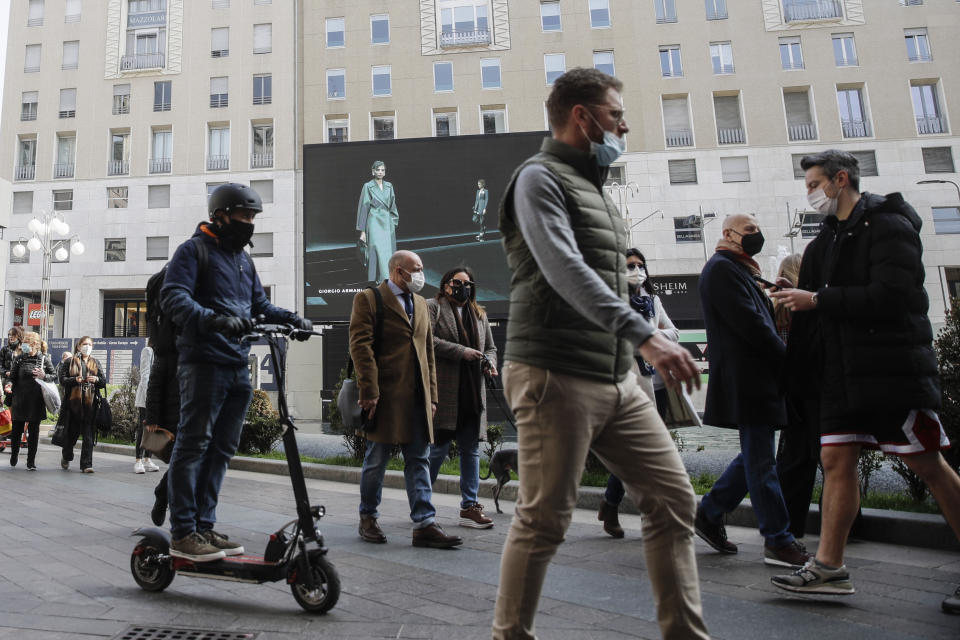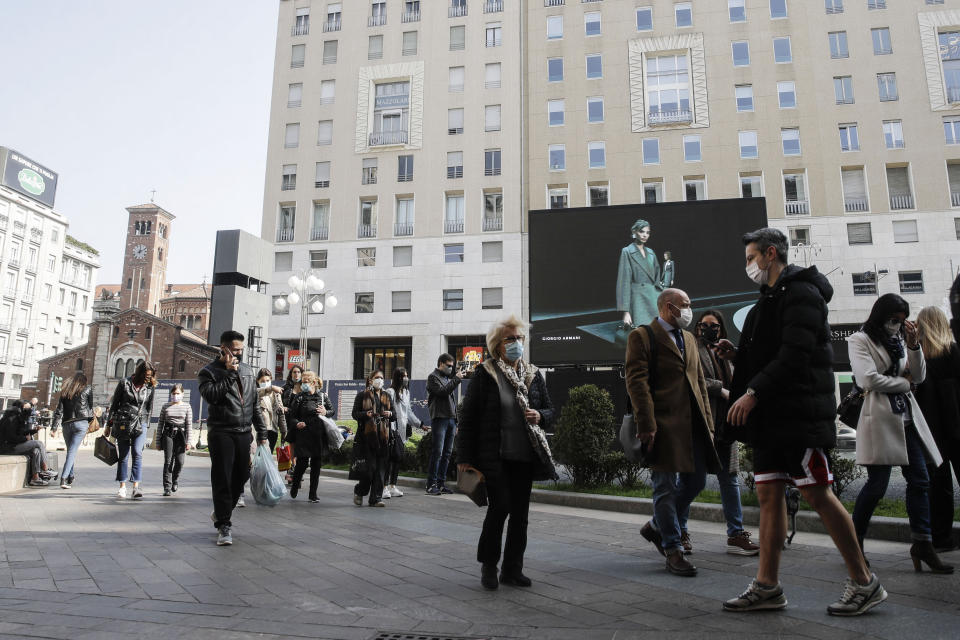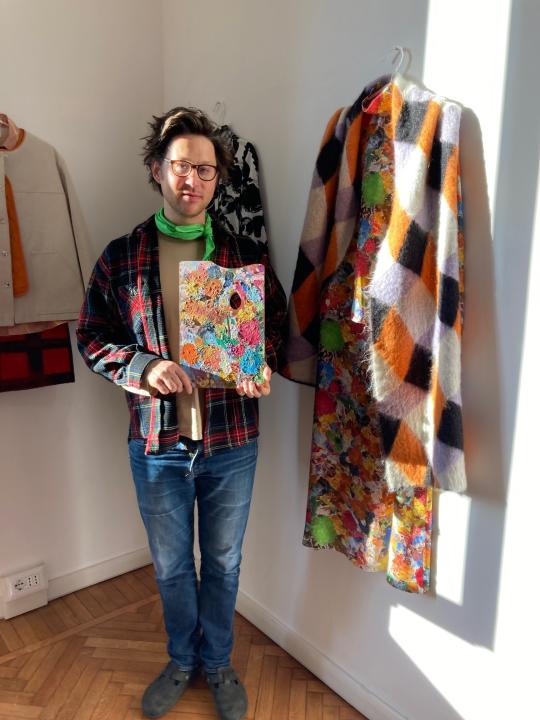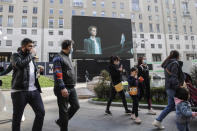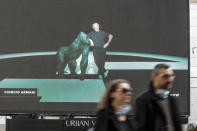Milan designers hit reset button during digital fashion week
MILAN (AP) — Fashion is off the hamster wheel, taking a deep breath that is allowing some freshness to seep into the once relentless cycle.
“It is so weird thinking about fashion, and the kind of hamster wheel of fashion, and how we never had a break and always complained about it,’’ Marc Jacobs said during a Milan Fashion Week video chat with Miuccia Prada and Raf Simons post-digital show. “And then you get a break, and you complain.”
Instead, he said, he was taking the moment to watch others, and be inspired.
Milan Fashion Week of mostly womenswear previews for next fall and winter wrapped a nearly all-digital edition on Monday. Only one designer — Daniel Del Core, marking his brand's debut — held a live runway show for a small number of guests.
While the bustle of live shows with the parade of itinerant fashionistas decamping from New York to London, Milan and finally Paris was missed, designers also were stimulated by the slower pace of the pandemic-era fashion cycle.
Austrian designer Arthur Arbesser shrank his collection to just 25 looks, which he presented in visits to his Milan studio and video calls, opting out of a digital runway show.
For the creations, he upcycled textiles from previous collections that had been stashed in a studio cubbyhole. The designer revitalized them either by printing a new design on the other side, in the case of a pretty pleated skirt, or printing over the original with a different pattern, in the case of a black architectural detailing over a striped cotton.
Arbesser said the enforced quiet of the COVID-19-era restrictions, along with the necessity of saving money, pushed other creative forces to the fore. He and his team created a patchwork mini-dress out of cotton, silk and technical nylon, and they experimented with Shibori hand-dying for a wool mini skirt.
The collection bears Arbesser’s love of prints, this season’s inspired by an actual painter’s palette that he picked up at a flea market, which he mashes up with geometrical patterns and materials that range from soft silk jersey to wool to knits.
“I felt it was important to keep writing this story, my little story, keep adding chapters,’’ Arbesser said of his 8-year-old brand. “I am happy that even doing something so reduced, so little, while at the same time producing quality, you can still be seen, you can actually sell your production.”
Global masters Dolce&Gabbana took a technological leap forward with a no-holds-barred, youth-inspired collection featuring technical textiles in bold hues intermingled with hologram finishes, metallic glimmers and even multi-colored Styrofoam beads, for a feast of colorful confections.
The 140 looks included some reinterpretations of Domenico Dolce and Stefan Gabbana’s iconic pieces — including Madonna’s bejeweled bodysuit and corsets worn by dancers in Prince’s “Cream” video — from the early days when Dolce&Gabbana helped define the bold sexiness of the 1990s.
The result was a mix of Dolce&Gabbana’s trademark tailoring, often under strands of layered pearls and gold, alongside more futuristic elements that bely our new protective bearing: elaborate eye shields, plastic sneaker coverings and transparent slickers. Underlining this leap forward, a humanoid robot developed by the Italian Institute of Technology acted as master of ceremonies for the digital runway show.
“The collection is a tribute to this generation that asks us about the 1990s,” Dolce said during an in-person presentation of the looks at the designers' showroom.
The designers said the younger generation’s idea of sexy is much freer of preconceived notions than in the past, meaning men can wear lace T-shirts without a second thought.
“It has nothing to do with sexuality,’’ Gabbana said. “It is almost a euphemism; it’s about pleasing themselves.”
Giorgio Armani staged separate digital men's and women's collections in his own theater both around a replica of a gorilla statue dubbed Uri that has been part of his personal home decor for decades. This green version of Uri evoked the designer's support of wildlife preservation, but also echoed the collections' ties to the natural world. Prints and designs that can be interpreted as leaves, or water lilies, or simple sea creatures, provided the motif for elegantly relaxed looks.
The fashion world also paid tribute to creative colleagues in the theater, which have been mostly empty in Italy since the start of the pandemic.
Pierpaolo Piccioli staged the Valentino Fall/Winter 2020/21 collection live to empty seats in Milan’s Piccolo Theater, while the singer Cosima hauntingly intoned Sinead O’Conner’s lyrics: “It’s been so lonely without you here.”
The Valentino collection was a somber affair, fitting the moment. It featured tailored jackets that have been reconstructed into capes, layered with pointy-collared white shirts, skin-fitting tops with seemingly hand-cut holes. For women, there was a movement in flouncy miniskirts peeking out of jacket hems, while feminine flourishes like ruffles on shirts were employed with discipline. Accessories featured studded bags and boots.
Milan designer Francesca Liberatore had planned an extravagant show in a Milan theater with holographic effects, but decided against it in solidarity with theater creatives who can't occupy that space.
“I had the moral problem. How could I do a show in a theater at this moment when artists themselves cannot recite in this place?” Liberatore said by phone.
Instead, her virtual show featured an actor on an empty stage, and two-dimensional models, like paper dolls, in creations including reinvented trenches in camouflage, representing the state of siege society is living under in the pandemic.

 Yahoo Finance
Yahoo Finance 
